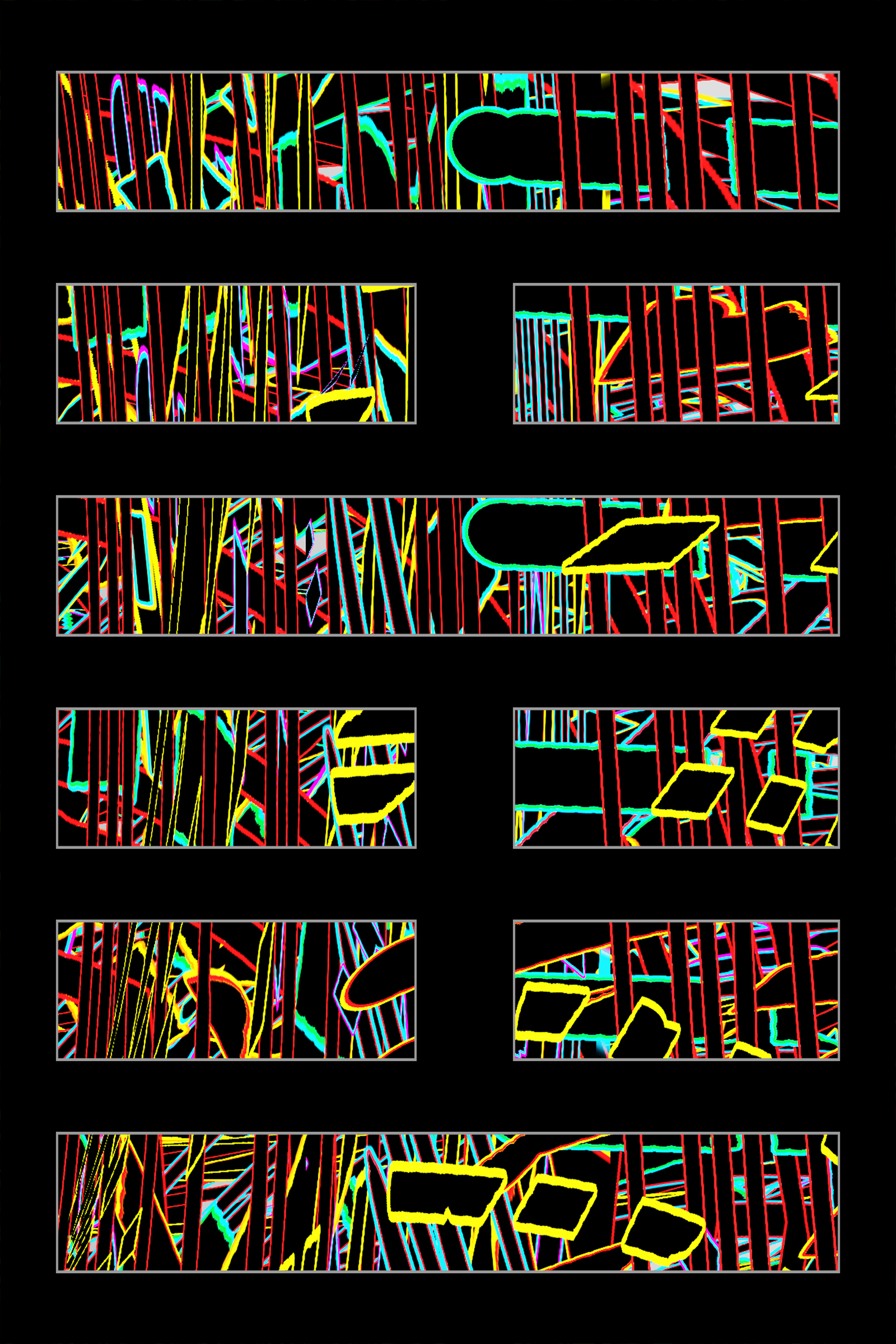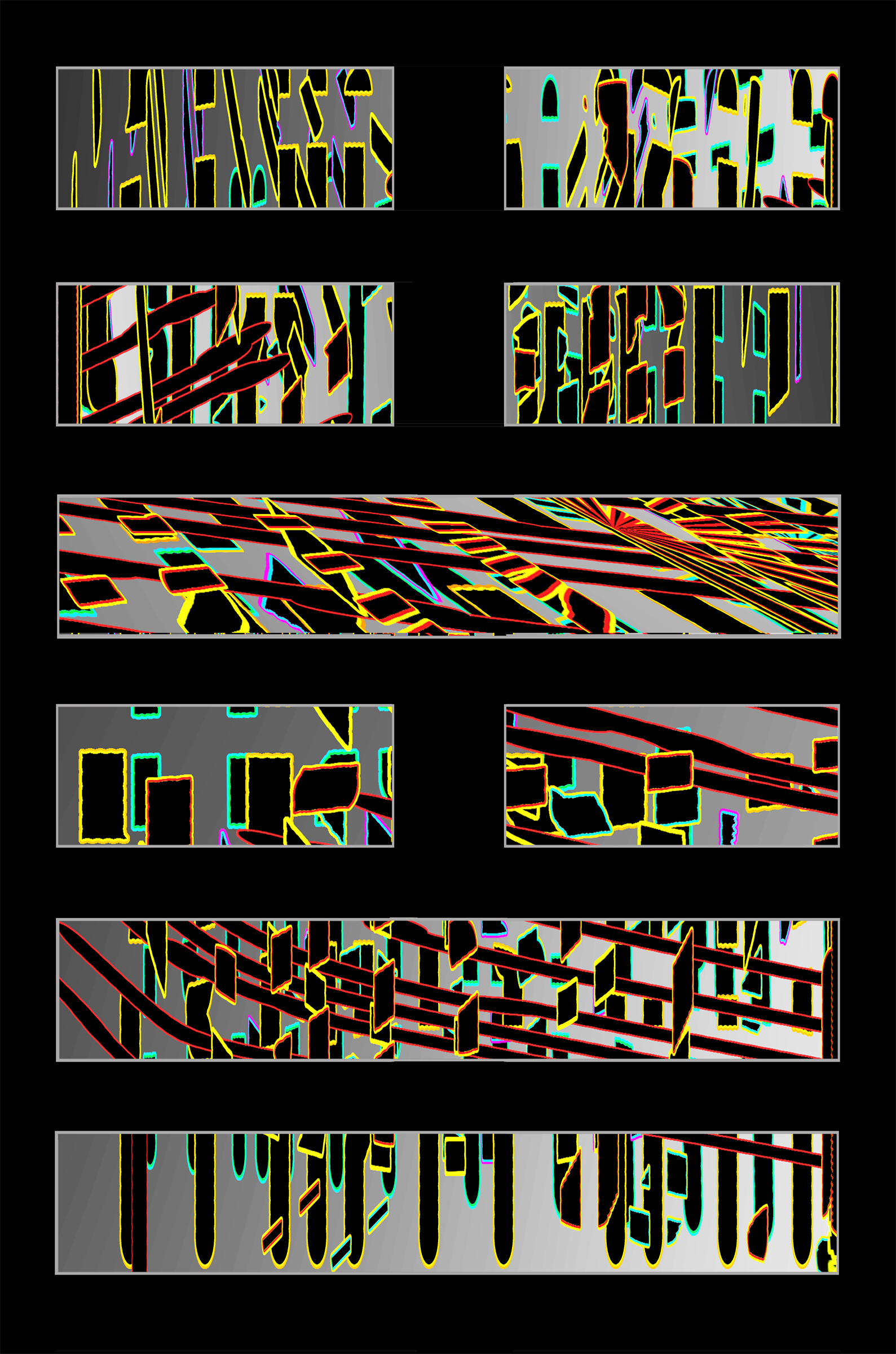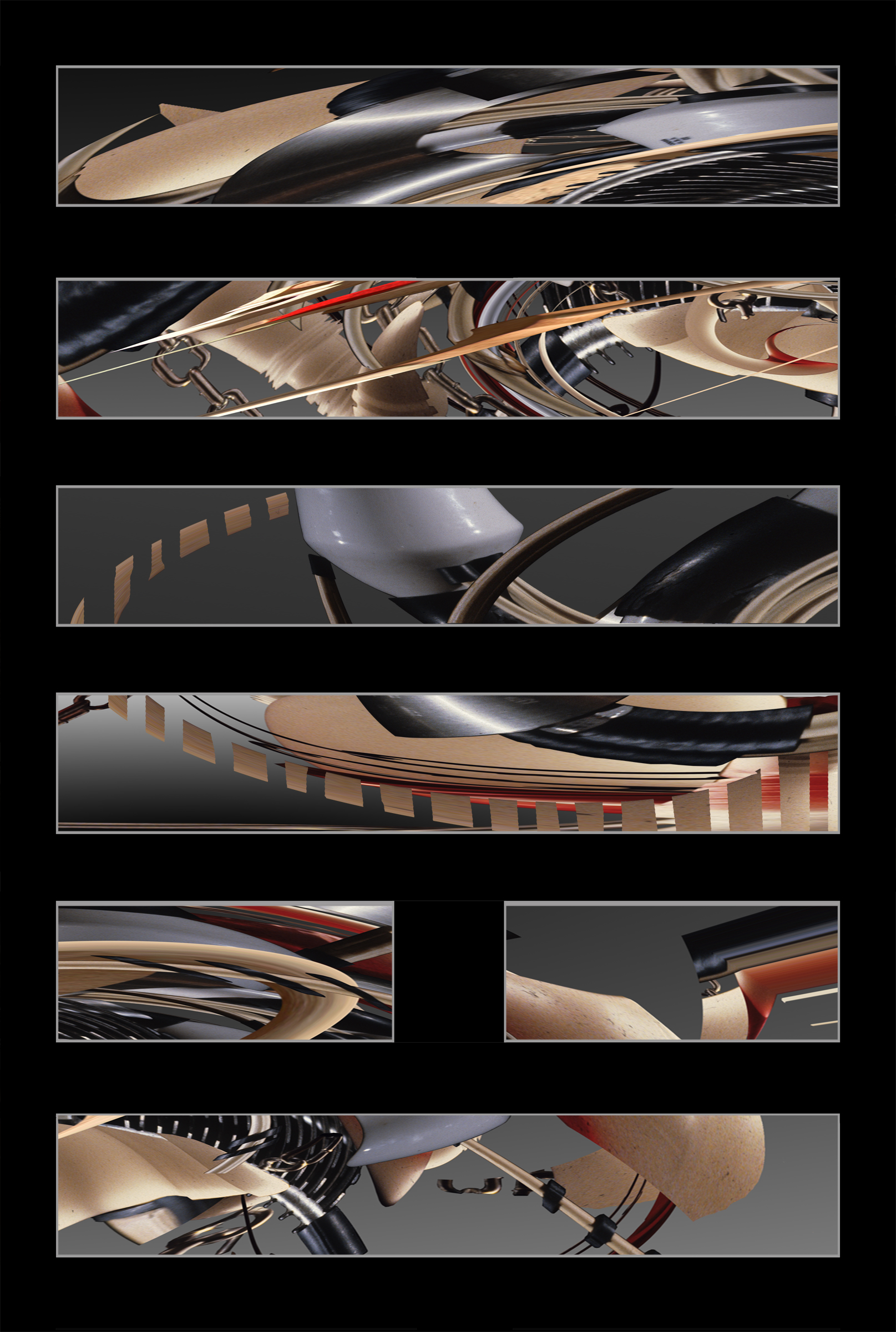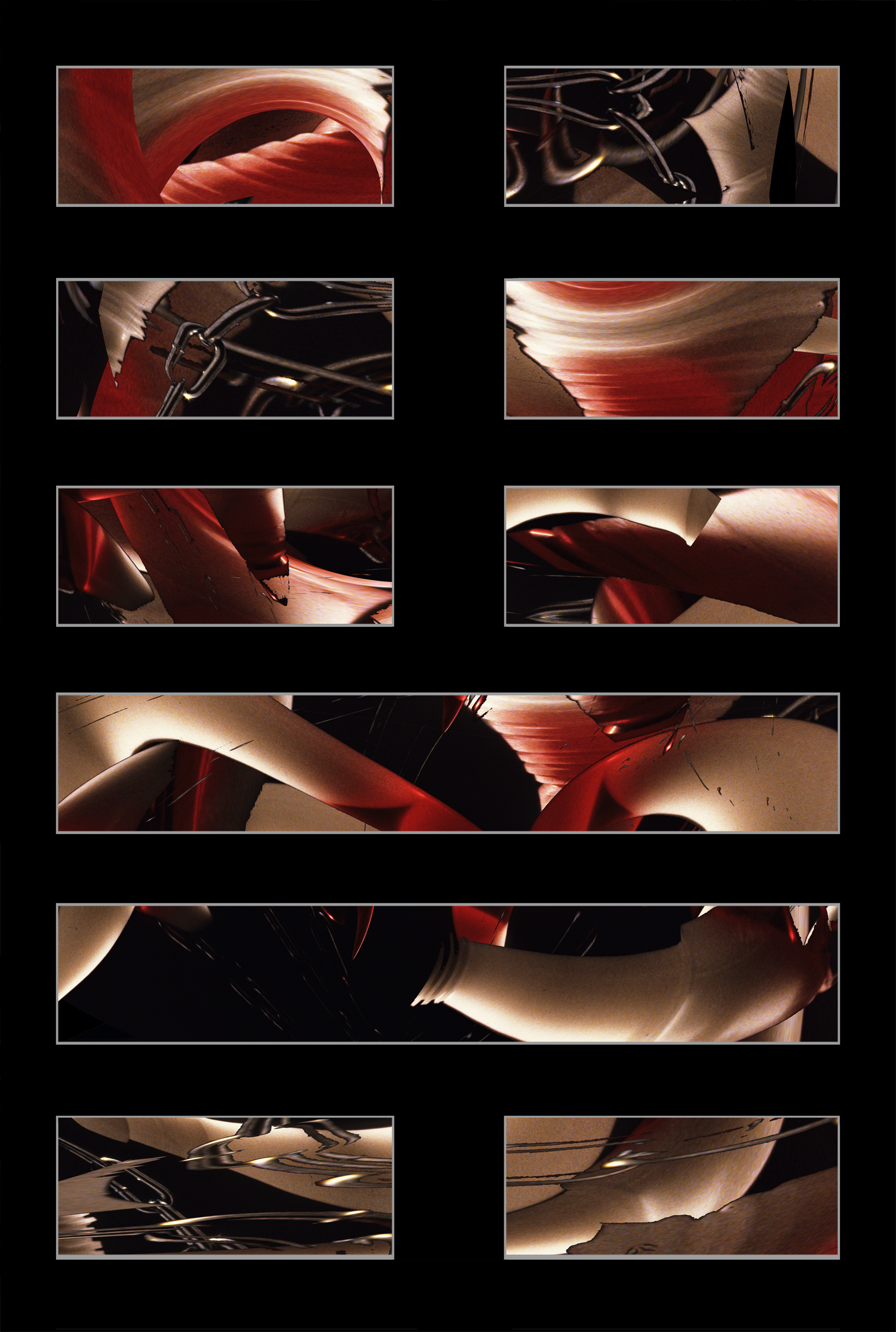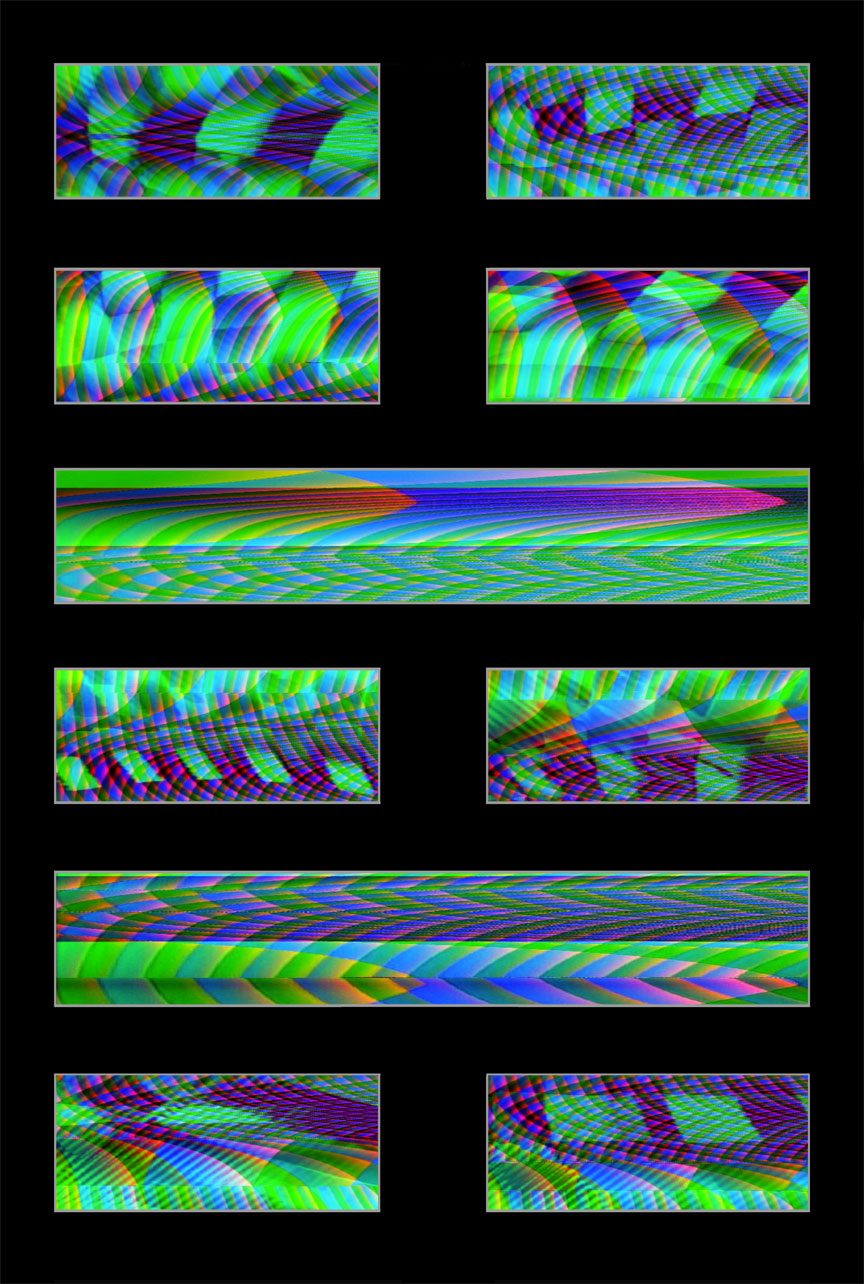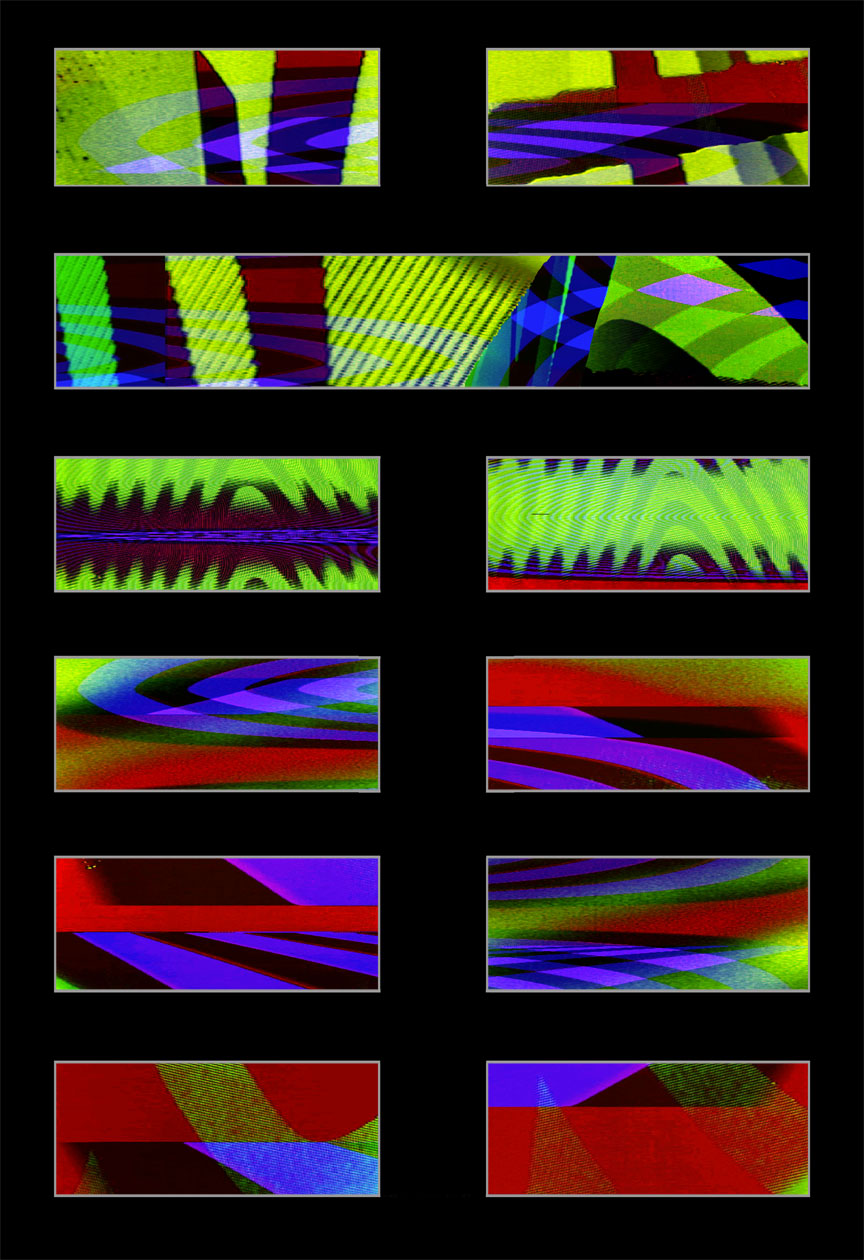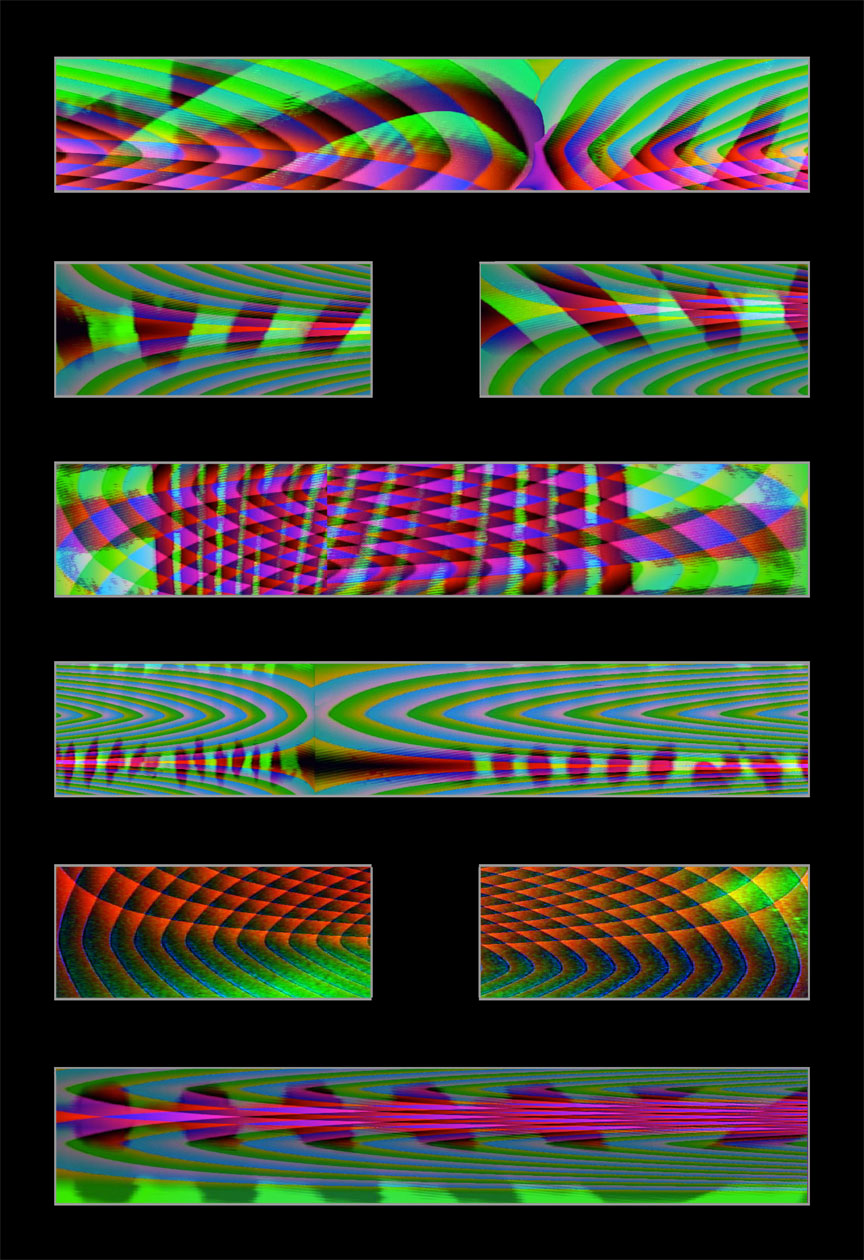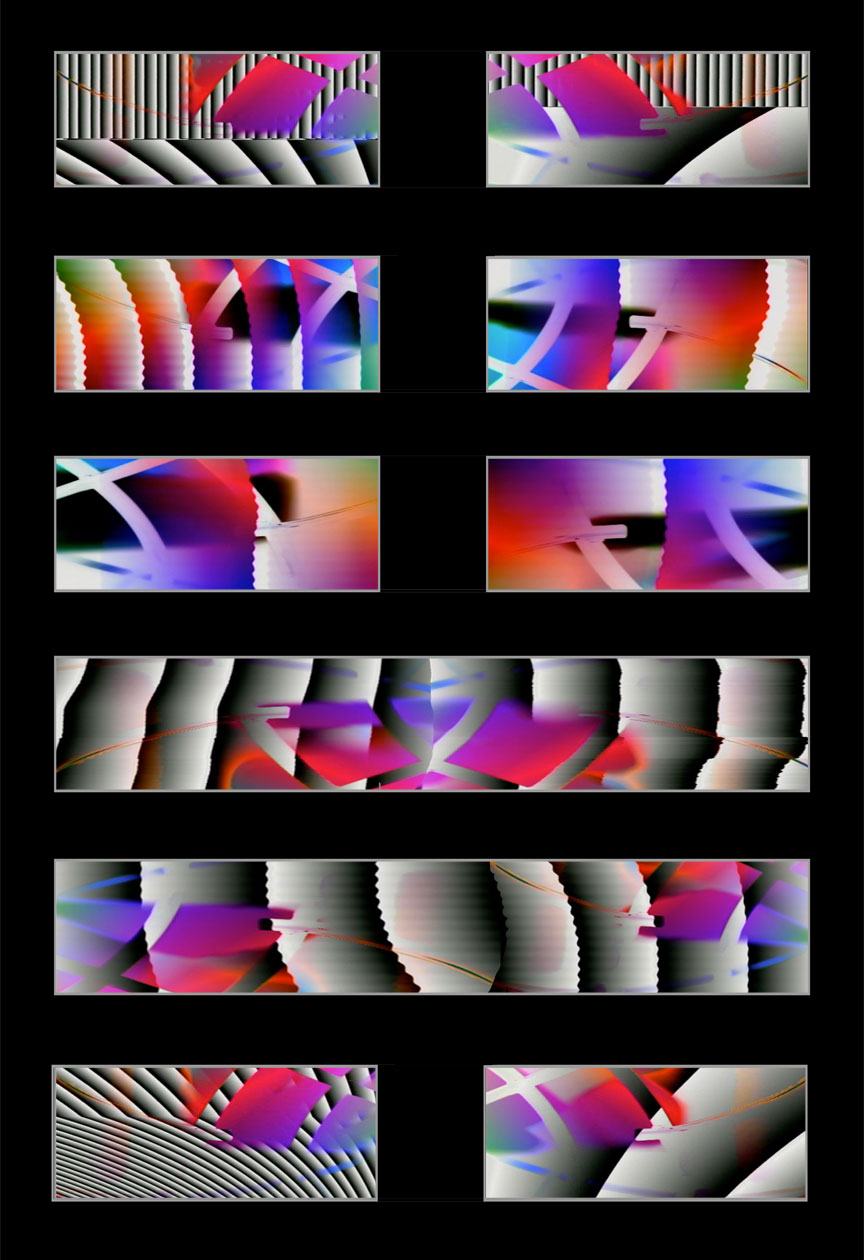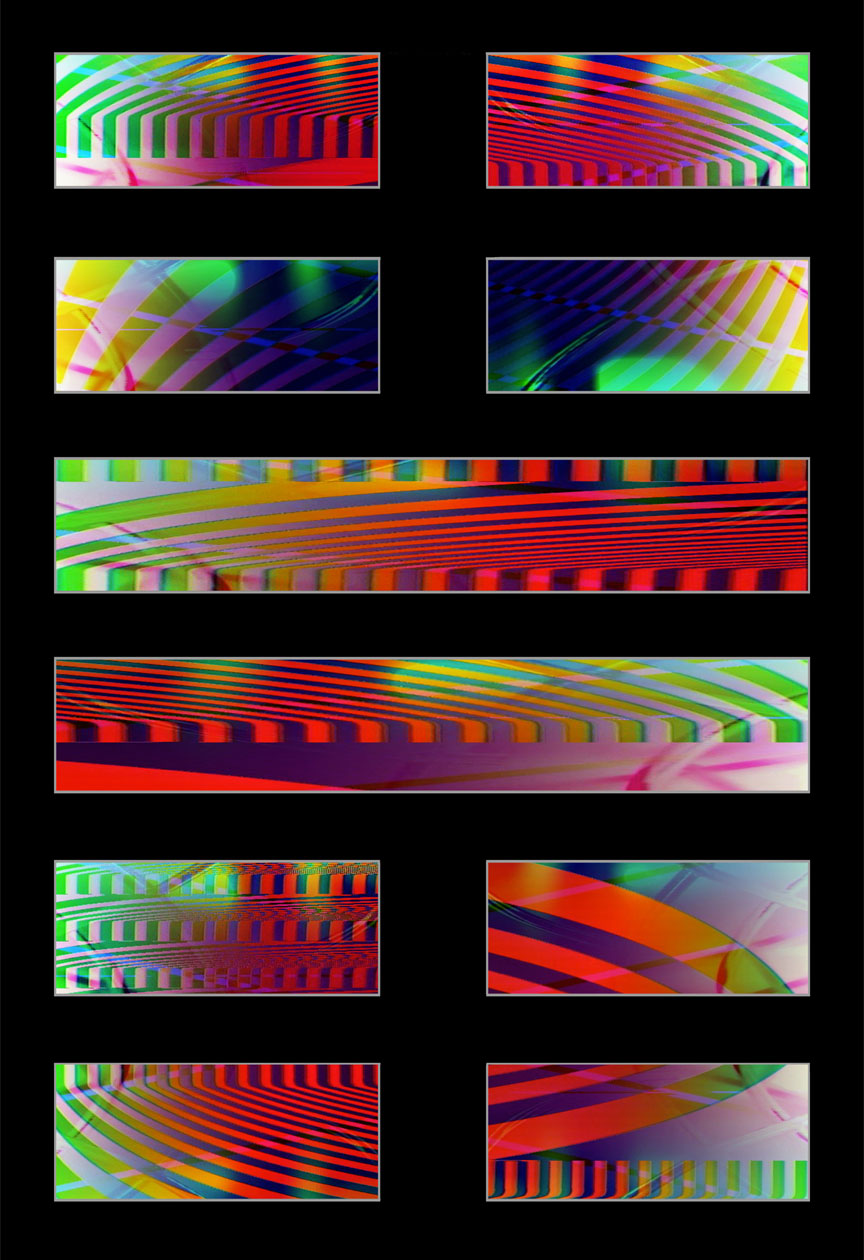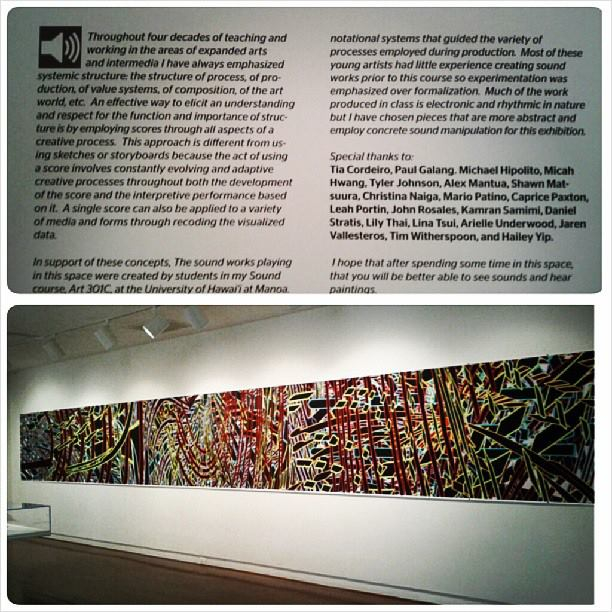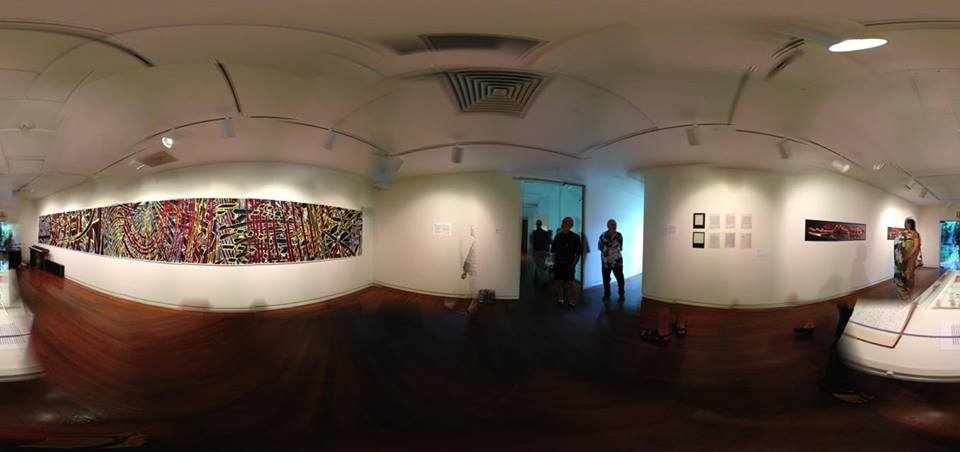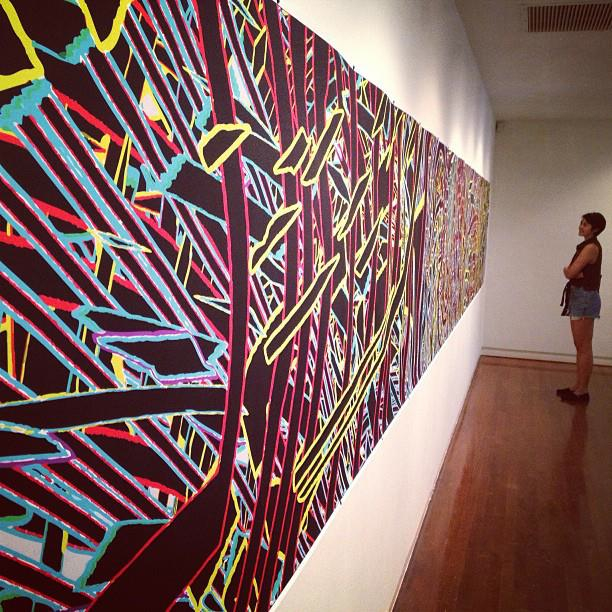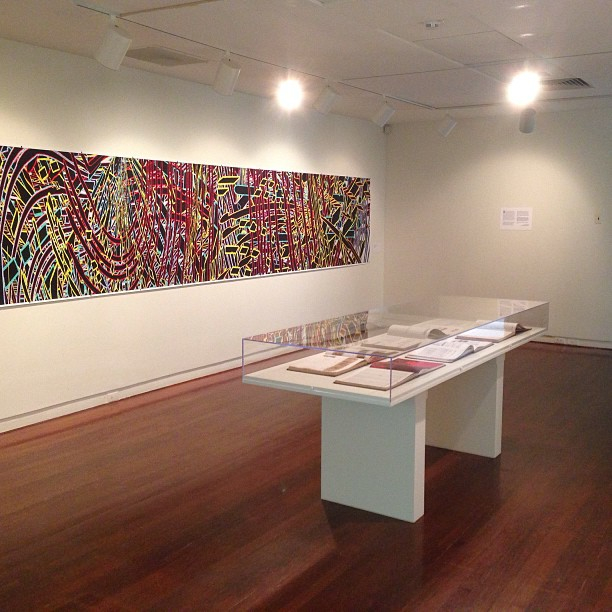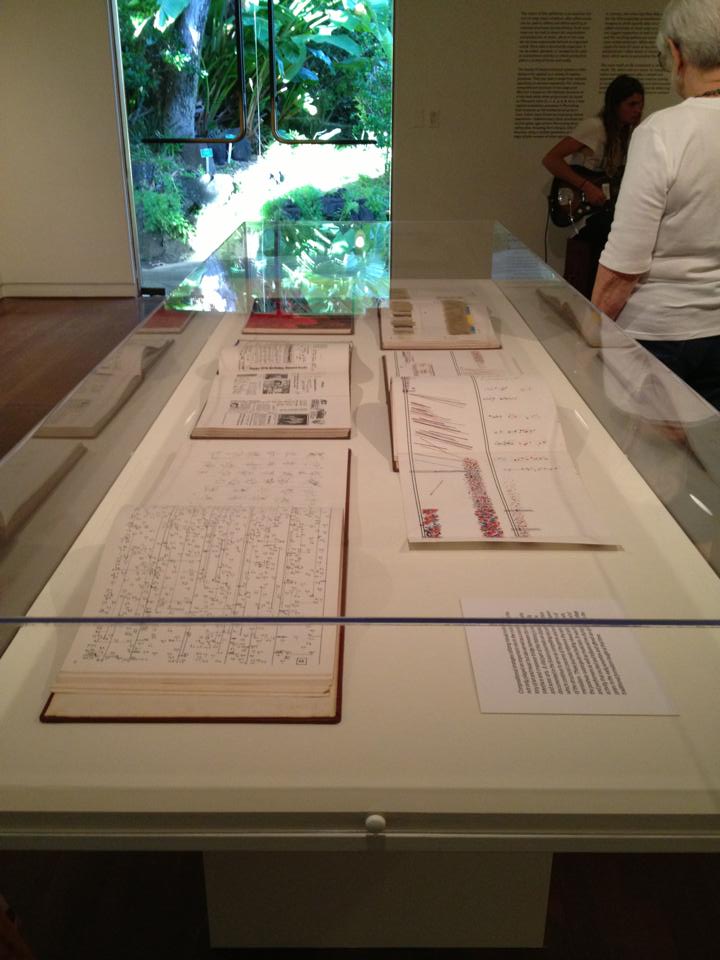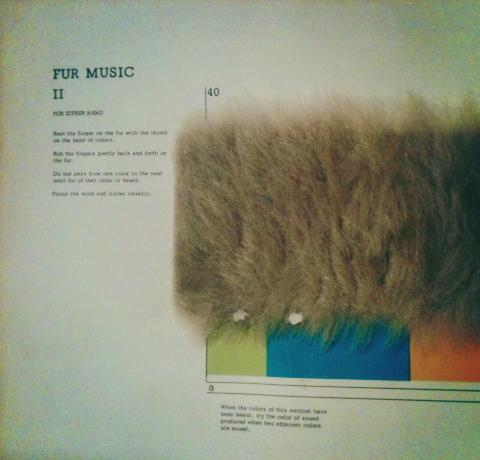Peter Chamberlain
NOTATIONAL SYSTEMS, OPEN ENDED STRUCTURES, DATA TRANSFORMATIONS
The intent of this exhibit is to sensitize visitors to ways visual notations, also called scores, can be used to reflect and define existing or invented structures (compositions). Such structures can be used to direct the organization and production of music, which in this case can be more expansively defined as organized sound. Once data is structurally organized, it can be coded, decoded, or recoded to be used as instructional
vehicles to inform production within a variety of forms and media. The beauty of these notational systems stems from their ability to be applied to such a variety of creative processes.
For instance, compositional structure of the large prints is based on the rhythmic structure of a hula beat while other proportions are based on Fibinachi ratios (1,1,2,3,5,8, etc.). Colors were chosen by employing chance operations (indeterminacy). Such processes involve game-type actions like tossing darts, rolling dice, throwing the I-ching (a John Cage favorite), using a random generator on a computer, or a seemingly infinite number of other options. In most cases an overall game-plan provides limitations and the resulting systems are considered open-ended structures. While data structures supply the basis for most of my concepts and compositions, I often factor in intuitive modulations which serve to personalize the work.
The score can be validated as an end result, yet when used as a score, its’ interpretation and performance adds a related and expanded element that allows creative activity to continue while concurrently and continuously redefining the score
by reflecting constantly changing function or content.
Compositional strategies like these not only played an important role in the modernist history of art and music but also served as a conceptual interface and crossover bridge between the visual arts and sonic arts. A vital part of this history is uniquely documented in the “Source” journals also on display which continue to serve as compelling documentation of the structural concerns of the genre and era also termed experimentalism. These journals reference the who’s who of the post war avant garde including visual artists, poets, and performers as well as musicians. It was this kind of activity that excited me during my college years in the early seventies and offered an escape from the traditional formalism taught at that time.
Throughout four decades of teaching and working in the areas of expanded arts and intermedia I have always emphasized systemic structure: structure of process, structure of production, structure of value systems, compositional structure, structure of the art world, etc. An effective way to to elicit an understanding and respect for the function and importance of structure is by employing scores through all aspects of a creative process. This approach is different from using sketches or story boards because the score contains both input and output factors and can be adapted to a variety of media and forms through recoding the visualized data.
Accordingly, recent student sound projects based on scores (and some of my own) have been selected to be played throughout the exhibition. Students are originally asked to create scores that reflect existing sonic or visual environmental structures and
interpretation strategies are left up them. Re-defining music as organized sound is a big step for them and most of these works are first-time experiments in an unfamiliar medium. I applaud them and hope you enjoy the ambience.
Peter Chamberlain
